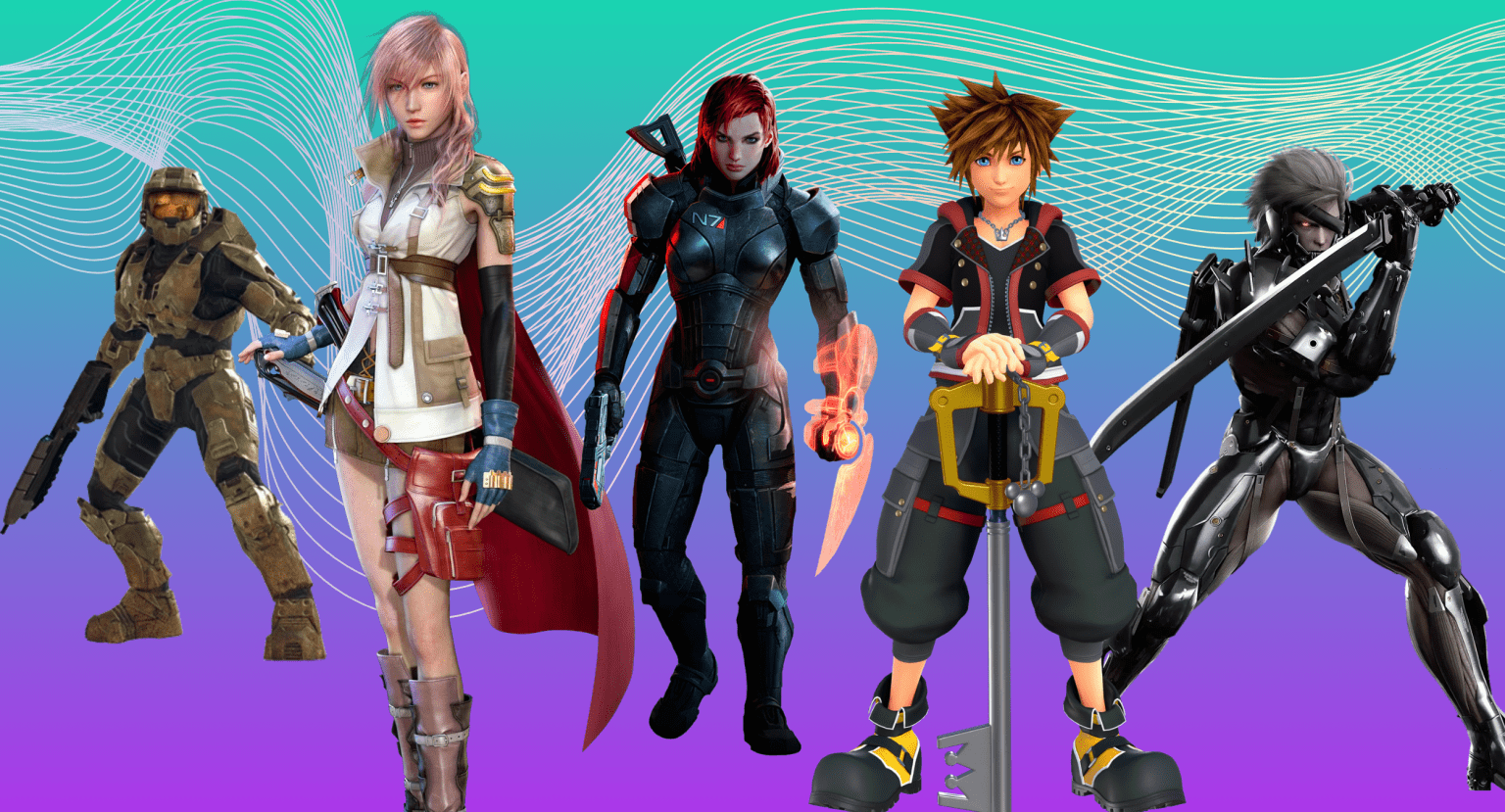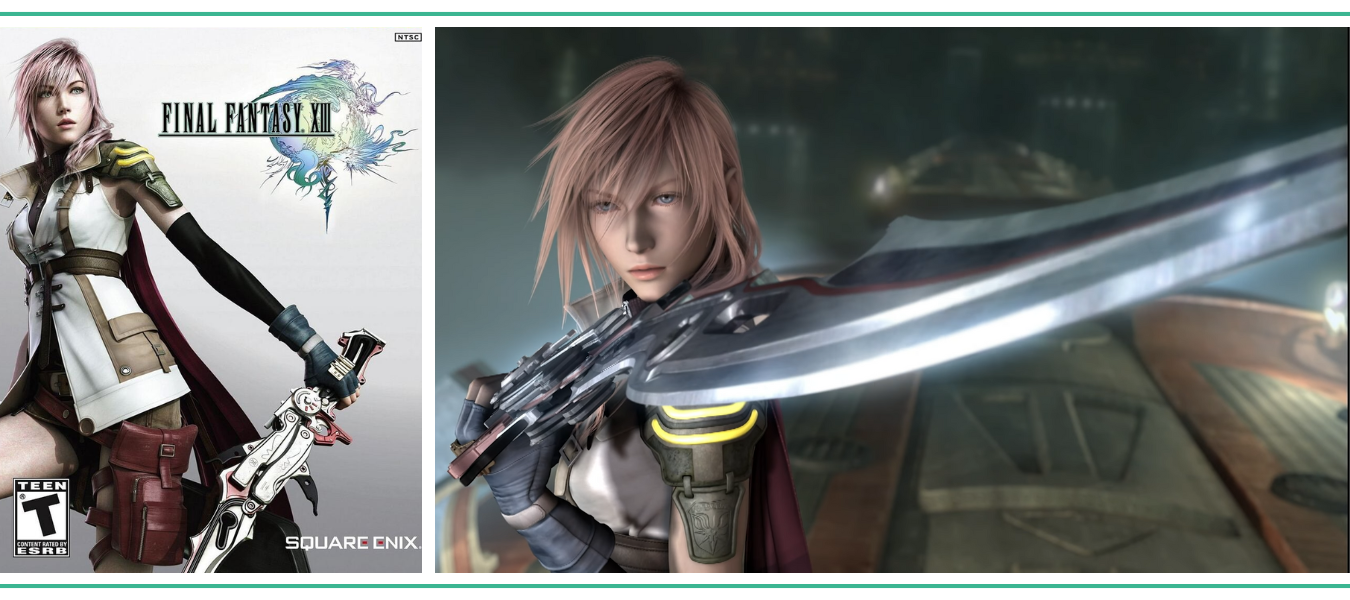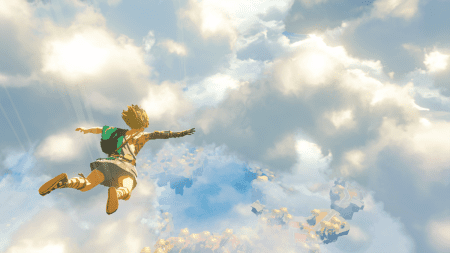Video game culture subsists primarily on two load-bearing beams: nostalgia and hype. As much as gamers should probably enjoy the games of the present, we always seem to be looking both to the past and to the future. We simultaneously want game makers to push the medium in exciting new directions while reminding us of the golden years all the same.
In honor of last month’s Summer Game Fest, aka not-E3, we asked various writers at The Punished Backlog which game from the past they were most excited about before its release. Which teasers made their hype levels go through the roof? What demos wowed them most, even if they ultimately led to disappointment?
– Sam Martinelli, Editor
Our 13 Most Hyped Video Games of Yesteryear
Whether a game succeeds or disappoints, there’s no denying the power of a great teaser. Without further ado, here are our 13 most hyped video games ever.

1. Mass Effect Andromeda
When BioWare announced a new spinoff sequel to my favorite video game series of all time, I was ecstatic. The November 2016 launch trailer quickly garnered millions of views, including countless of my own, especially as I tried to avoid news of the presidential election. It was the cover feature of that December’s Game Informer, leaking to wild levels of hype and promising dozens of tasty details.
Every day, I relished Googling “Mass Effect Andromeda” concurrently with “Gilmore Girls revival” to find out any and everything about these exciting new chapters of my beloved content. I’d click on anything, and so would thousands of other fans. For a while, we had hope. However, to quote Mike Birbiglia, I am in the future also, and I am fully (sadly) aware of how disappointing both of these franchise reboots were.
Upon release, Mass Effect Andromeda was mocked mercilessly for its wonky facial animations. While some of those cosmetic struggles were patched, the game itself was hollow. There were wide-open maps with nothing to see. The story was weak, repeating beats from the beloved original trilogy. There were fetch quests upon fetch quests, and lame romances to boot.
While Mass Effect Andromeda did have occasional highlights—smooth combat, a fun spaceship to explore, Kumail Nanjiani perfectly voicing a smarmy alien politician—the game was, by all accounts, a failure. All promises of future DLC or sequels were canceled. It had enormous potential but did not deliver, which makes sense, given that it turns out BioWare was stretched far too thin, simultaneously making another (ultimately lackluster) space game, Anthem.
Mass Effect Andromeda gathers dust in the corners of my heart and my game cabinet (worth nothing in resale value), reminding me to always manage my expectations.
– Written by Amanda Tien
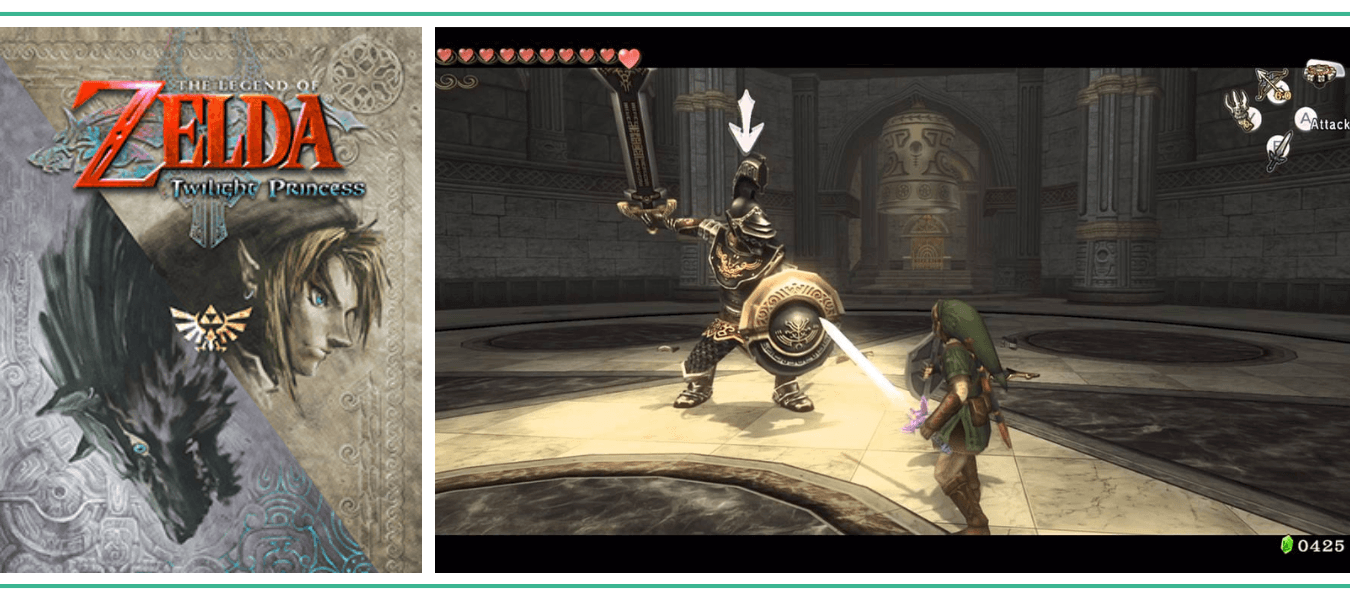
2. The Legend of Zelda: Twilight Princess
Given how much I write about The Legend of Zelda, one might assume I’ve always loved and admired every single game in the series. Strangely enough, this hasn’t always been the case, as I was one of the obnoxious jerks at the young age of 12 who refused to play The Wind Waker when it first came out because I didn’t like the cutesy art style (oh, what a fool I was).
So when Nintendo announced at E3 2004 that its next Zelda game would take on a more “mature” form with more “realistic” graphics, I could not have been more hooked. My hype level reached a fever pitch at E3 two years later, when the Big N confirmed that this brand new Super Cool Zelda Game Not For Little Babies would also be a launch title for its revolutionary new console, the Nintendo Wii.
It was everything I’d ever wanted: a gloomier world with elements of horror and dark fantasy AND innovative motion controls for that extra layer of kinetic immersion. You could not have convinced me in 2006 that any game would be more EPIC.
Playing Twilight Princess for the first time was an absolute dream come true. The booming Hyrule Field theme, the Wolf Link-Midna sections, the giant boss battles and creepy dungeon locales… I was in love with all of it. Regardless of what anybody says about the game now—that it doesn’t push the envelope conceptually, that the motion controls were bad and pointless, that the darker tone and art direction pale in comparison to the whimsy of Wind Waker, that everything is just a little too easy—at the time, it was exactly what every Zelda fan wanted.
I wouldn’t call Twilight Princess a top-five Zelda game now, nor would I say it’s even one of the more outstanding 3D entries. That said, it was everything I could have hoped for in 2006, and I don’t think my hype levels have been the same for anything since.
– Written by Sam Martinelli

3. Pokémon Ruby and Sapphire
In the summer of 2002, my friend L and I repurposed a math class binder into a dedicated research folio for Pokémon Ruby and Sapphire. This was years before YouTube or Kotaku. We lived hundreds of miles from the nearest GameStop. To find out information about the games, we had to use precious dial-up AOL minutes to scour the internet.
We felt like detectives. We used our parents’ precious color-ink printers (and later, after they got mad, black-and-white at the library) to print any images we found from forums and Japanese press releases. We carefully hole-punched sheaves of paper, saving our plastic page protector sleeves for only the best screenshots. I remember sitting on a curb under a palm tree in the desert as we flipped through our binder, marveling at Ruby and Sapphire’s promise of reflections in the water.
When I got Pokémon Sapphire as an early holiday present, it was everything I hoped it would be. GameFreak made good use of the technological jump to the Game Boy Advance. Players could now do double battles, garden, build relationships with Pokémon, and participate in non-combat contests! But, best of all, players could make customizable forts called secret bases, which sadly only ever existed in that era of the game, and even visit each other through Game Link Cables. L and I kept printing off things for the binder when corners of the internet shared that you could press buttons in a certain way on a certain island and find secrets.
When I remember riding the ocean waves with Sapphire’s Legendary creature, Kyogre, I once again feel excited about the life and world ahead of me.
– Written by Amanda Tien

4. Elden Ring
Watching the Elden Ring trailer from Summer Game Fest 2021 unlocked something deep and growling within me. I transformed from a mild-mannered, casual Nintendo Switch enjoyer to a frenzied, aspiring Gamer, scouring Facebook groups and invite-only Discord servers to secure a PlayStation 5 despite the supply shortage. I set early alarms to check whether any Best Buys were expecting a shipment and, miraculously, I scored a spot in a ragtag line of scalpers and desperates at 6 a.m. in a torrential April downpour. Small wonders.
All this, in service of playing my first ever FromSoftware game. My first Soulslike. My first proper all-grown-up console experience.
To this day, I’m not entirely sure why Elden Ring drew me in. The Souls games I’d always dismissed as “too hard to be fun,” so it wasn’t the FromSoft allure. Nor was it the George R. R. Martin hype. Sure, I’d read his books, but even then, the level of his input was unclear. I think it was, well and truly, the feelings invoked by that gameplay trailer. Off-color skies and bizarre creatures, obtuse monologues, darkly resounding music, a freaky magic horse-goat, and no hint whatsoever of plot or character… These coalesced into a potent vibe I’d rarely encountered, recalling Labyrinth, Coraline, Mike Mignola’s sketchbooks, tales of Sir Gawain and other Arthurian lore—all earnest and strange and unique and magnificent.
No surprise that playing Elden Ring battered my expectations to bits. It remains, in my mind, one of the greatest games ever made. And now that I’ve finished this blurb, I can finally reward myself by booting up Shadow of the Erdtree. Arise, Tarnished!
– Written by Ben Rashkovich

5. Halo 4
For a long time, I used to say with confidence that Halo was the greatest gaming series ever created. Not Final Fantasy: too many sequels. Not Mario: too many different ideas. With the execution and elevation of the series from Combat Evolved all the way to Reach, Halo proved it could juggle complex world-building and astounding gameplay. Without Halo, there is no Call of Duty 4, or Titanfall, or modern Wolfenstein. With Bungie moving on to a bigger destiny and Halo: Reach offering a fun (if unneeded) prequel to the main events, by 2011 I thought Halo had gone out on a high note.
So, when Microsoft announced a brand new studio of Halo veterans was taking the reins and tackling the cliffhanger at the end of Halo 3, I was of split minds. On one hand, I had craved knowing what happened next since 2007 (a long time ago, even back then!). On the other, Halo had done what every good series should do: End with the finale that was originally envisioned. The concept is best conveyed in two of the greatest shows of all time: Scrubs kept going after its natural ending and is poorly remembered for it. The Good Place ended at its natural conclusion and is beloved.
In the end, I got swept away by the wave. “The greatest shooter series is back, it’s being handled by people who know it, and there really hasn’t been a bad game yet. What is there to NOT be excited about?” is an exact text I sent to a friend during the E3 press conference after Halo 4’s announcement. When it launched, there I was on day one, hand out, ready to dive in.
It was okay, I guess. It certainly didn’t hit any of the highs of the previous installments, and boy was that story convoluted for no real reason. To this day, I’m not sure I could explain what happened in Halo 4 without some serious Wikipedia reading. But hey, the gameplay was still good!
– Written by Gary Wilson
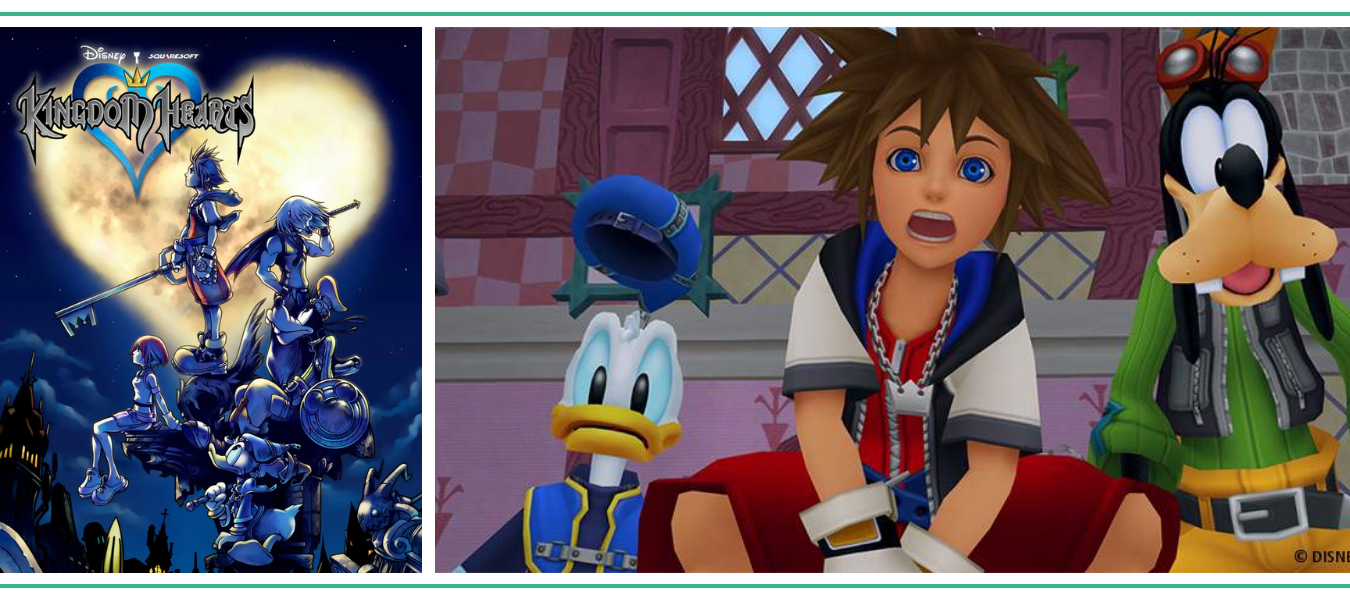
6. Kingdom Hearts
I’m a Disney kid at heart. Growing up, my favorite movies were Peter Pan and Robin Hood. My family vacationed at Disney World two or three times before I was five, and my mom even worked for the Disney store for a while. The house of Mickey was a home I knew well.
My dad was also a gamer at heart, introducing me to video games from practically birth. One of our personal favorites to play together was Final Fantasy on the NES; he’d let me come up with silly names for our party members while silently cursing about me constantly using potions. Some of my favorite memories are on his lap, as “Lamby” and “Barney” took down Garland.
Imagine my shock then, in 2001 at the age of eight, when I picked up a copy of either Game Informer or Electronic Games Monthly to check out what was coming for the PlayStation 2. My parents had refused to upgrade, saying my PSX was performing just fine. And there, in glossy paper, was a poster for Kingdom Hearts: It had Donald and Goofy. It had the most Final Fantasy-ass Final Fantasy characters I had ever seen. It was like love at first sight, and I had to have it.
I pleaded with my parents, explaining that I needed the new console for this “can’t be real” image. They took some convincing, but the promise of Disney and FF was too strong. They relented. I got a PS2, and Kingdom Hearts was mine at launch. I can’t remember exactly, but I believe I sobbed when I first saw Donald cast magic.
Hindsight wants me to be cool and say that it didn’t live up to hype, but let’s be honest: I loved every goddamn second of Kingdom Hearts. I loved it so much, I ended up with two copies of Kingdom Hearts II at launch because my family didn’t know what else to grab me. So worth it.
– Written by Gary Wilson
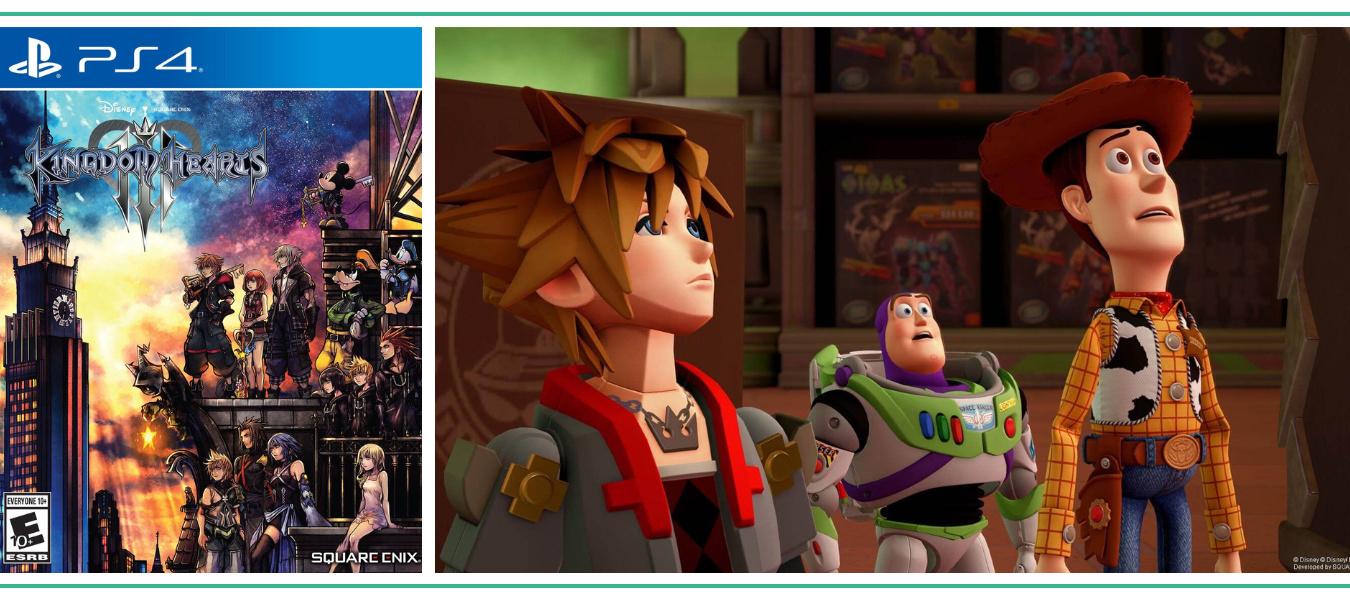
7. Kingdom Hearts III
Much like my pal Gary here, I loved the original Kingdom Hearts and easily made it my most-played game on PlayStation 2. I wasn’t even the biggest Disney or Final Fantasy fan, but I loved exploring the vast, colorful worlds and interacting with characters from countless beloved classics. The combat, weapon, and item systems all felt robust without being too complicated, and the story, while a bit goofy (gawrsh!) struck a unique balance of melancholy and heartwarming. I’d never played anything like it and I certainly craved more opportunities to jump back into the universe Square Enix created.
Luckily, back in the days before DLC, games got proper sequels and it was only two years later that the Game Boy Advance’s Kingdom Hearts: Chain of Memories was released. Even though it was a departure from the original’s style in the form of a card-based battle system, I dove in headfirst and found myself just as enamored with the franchise as I was before. Imagine my delight then, when Kingdom Hearts II made its way to PS2 less than 14 months later!
My excitement for what I thought would be my new favorite game ever quickly turned to disappointment, as I trudged through the tedious and uninspiring adventure. While Chain of Memories introduced the mysterious Organization XIII with its odd cast of characters motivated by unclear intentions, KH2 doubled down on the bizarre story that has now become something of a punchline for the series. Convoluted and impossible-to-follow plot aside, the gameplay here was also a far cry from the original’s fresh RPG style. There was little to explore or discover on your own; instead, each cutscene led directly into a button-mashing battle, which led directly into a cutscene, and so on. I’m not sure I ever managed to roll credits on this dud, but that didn’t mean I gave up on a return to form eventually.
Speculation on Kingdom Hearts III started, as I remember it, soon after the release of KH2, but details were sparse for quite some time. Between the highs of KH1 and Chain of Memories, but the deep lows of KH2, I was still hungry for more time with my pal Sora. Unfortunately, that time came in the form of ELEVEN different releases over the span of 10 years, none with a “3” attached to the title. I’m not sure humanity has enough words to properly describe what happens in the Kingdom Hearts franchise between tentpole installments 2 and 3, but let’s just say things get pretty Donald Duck-ed up.
Ultimately, after waiting 13 excruciating years for a proper Kingdom Hearts III, through delays and vague content leaks, the game was a complete disaster. I can’t believe I spent nearly half my life waiting for a game that broke my heart, but what’s even worse is that I just found out while writing this that Kingdom Hearts IV is in development….
– Written by Zack Gulinello

8. Super Smash Bros. Brawl
I grew up in a Nintendo household. No special, unique life experience here; it was just what I grew up with. The GameCube was the console of my childhood, and my most played game on the GameCube? Same as many others, it was Super Smash Bros. Melee. My friends and I would gather after school and play Melee religiously (or at least, what I thought counted as “religiously” at the time—I’d fall down a deeper rabbit hole of Melee fanaticism later in my life).
Melee was released in late 2001, when I was six years old, so I wasn’t paying attention to the gaming news cycle. I was gluing macaroni to construction paper and engaging in all the other bizarre activities that we did in kindergarten. Brawl, on the other hand, released when I was squarely in the middle of my “getting online” phase, checking IGN and GameTrailers daily after school. It was also when my gaming horizons were broadening outside of the realm of Nintendo. So when that first Brawl trailer hit during E3 2006, I, like many others, lost my mind. Twilight Princess Link? Snake?? HD graphics (at least, that’s what I thought then)?? This was going to be the greatest game of all time.
The unique thing about Brawl, though, was that it didn’t just end with trailers. Series creator Masahiro Sakurai maintained a website called the Smash Bros. DOJO!!, posting daily updates about the contents of the game. This wasn’t a hype train that came in bursts; it was fueled daily. I vividly remember getting up early every morning to read the DOJO’s latest posts. It was a magical time. The cutscenes, the character reveals… Truly, there is nothing like a Smash Bros. marketing campaign, and Brawl’s drip feed of updates was addicting.
Tragically, Brawl never reached the lofty heights of those daily DOJO updates. I stuck with it for a time, but even in my non-competitive era, I gradually realized how slow, floaty, and overall… less good it was compared to Melee. Around half a year after its release, I stopped playing Brawl and went back to the good stuff.
– Written by Keisuke Isobe
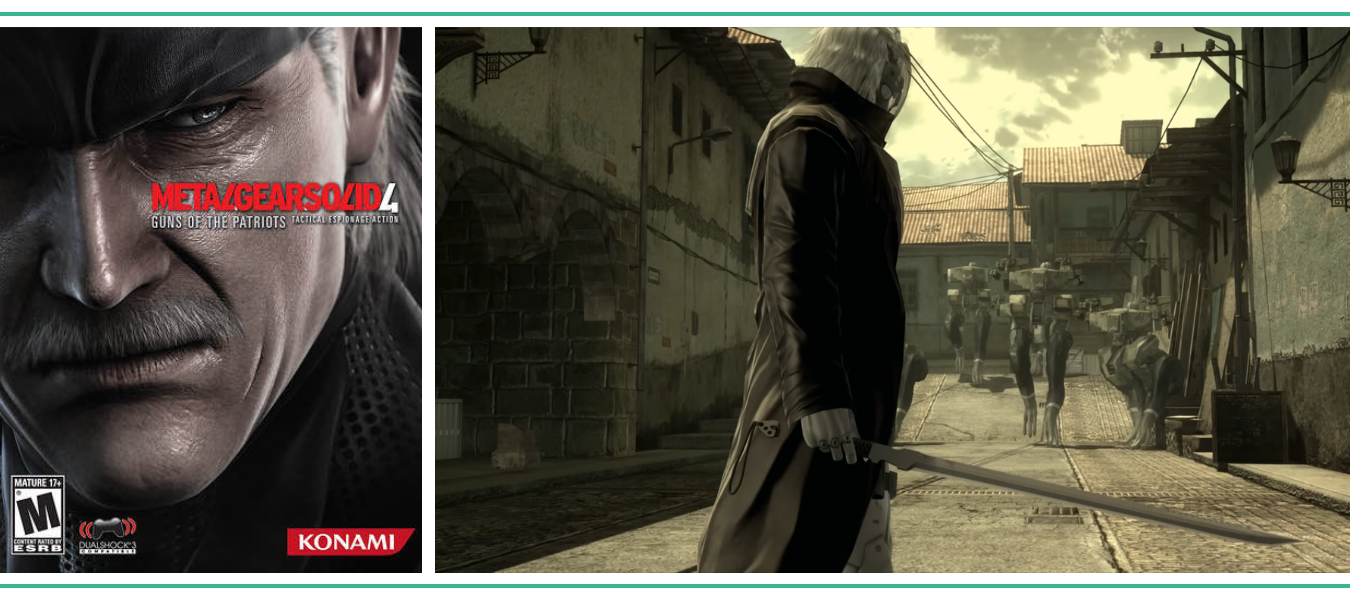
9. Metal Gear Solid 4: Guns of the Patriots
I was a bit too young to be as excited as I was about Metal Gear Solid 4. For a time, the first three MGS games existed in my life as stories told on playgrounds and at lunch. Eventually, copies were borrowed—knowingly and unknowingly—from older siblings and cousins. I had played the first two Splinter Cell games, but Sam Fisher’s dialogue didn’t seem nearly as interesting as Solid Snake’s.
My best friend and I had briefly played the GameCube remake Metal Gear Solid: The Twin Snakes at his cousin’s house. Quickly, I realized this wasn’t Splinter Cell; it was something else entirely.
I laughed during the E3 2005 trailer for Metal Gear Solid 4: Guns of the Patriots as Snake fought for the director’s chair, without realizing the importance of the Hideo Kojima reveal. I also didn’t fully understand the tongue-in-cheek fight between Snake and Raiden over the “Main Character chair.”
The TGS 2005 trailer, which revealed Old Snake and the Gekko units, captured my imagination. It was the first PlayStation 3 game that I was really excited to play. I used the trailer to persuade my dad to buy a preowned copy of Metal Gear Solid 2. I enjoyed playing as Snake during the game’s opening hours, but Raiden became my protagonist for the series. I grew slightly disappointed that MGS4 wasn‘t about him.
The E3 2006 trailer showed off the gameplay for the next-gen MGS experience. The camouflage technology was incredible! The title screen and billing block appeared. The trailer was over—or so it seemed. Suddenly, a lone swordsman cut through a unit of Gekkos. I recognized my protagonist immediately. I watched those last two minutes of the trailer on repeat for years.
MGS4 is Solid Snake’s swan song and a masterpiece that I return to every chance I can, smiling every time I see my lone swordsman.
– Written by Clint Morrison, Jr.
10. Final Fantasy XIII
If you follow me on this site or in real life, you know I’m a pretty big Final Fantasy guy. Even 20 years later, I still remember my first time engaging with Square Enix’s storied franchise.
My brother and I had gotten into an argument at my grandmother’s while playing the then-recent Game Boy Advance SP. We hadn’t fought over the SP, mind you, but rather over the Pokémon cartridge in the slot. There was only one save to go around, so, naturally, we both wanted our own game. My grandmother, who didn’t understand the nuance, assumed we wanted to play together—as if!—and insisted my mother buy us a second SP. What luck, we realized!
So, we went to Costco. As we browsed the electronics aisle, I reminded my mom that a handheld did nothing without a game cart. She sighed, grabbing one of those big bundles containing an SP, a case, a game, and a corresponding strategy guide.
I know what you’re thinking—it was Final Fantasy! No, it was actually a Zelda compilation game. But not too long after, at that same Costco, I happened upon Final Fantasy I & II: Dawn of Souls and asked my mom if we could grab that too. She obliged.
I made plenty of great memories playing Dawn of Souls—even if it was too hard for 10-year-old me. So, when 2007 rolled around and my brother bought me a copy of Final Fantasy XII for my 12th birthday, I was elated.
“How did you know I liked Final Fantasy,” I asked him.
“I asked the guy at GameStop what game a nerd would like. He gave me this,” he replied.
Snark aside, my brother did well. Final Fantasy XII was indeed a game I liked; to this day, it remains my favorite of all time. Upon finishing it, I decided I needed to play them all. So, I went back and played X and X-2, then the DS remake of III and GBA port of IV. Eventually, I would discover the classics—VI and VII—and fall in love with the series all over again.
But not before I had my heart crushed in 2010, when Final Fantasy XIII was released.
Before XII had even launched in North America, Square Enix debuted XIII at E3 2006. Though I only saw the footage months later, I was amazed at the graphical fidelity. As protagonist Lightning bounced around a monorail, pulverizing enemies with her signature gunblade, a booming battle theme, “Blinded by Light,” played in the background. We got a glimpse of the game’s active-time-battle combat. The whole presentation was electric.
Unfortunately, the actual game was far from. I waited four long years for Final Fantasy XIII to hit store shelves, and, like many, I was disappointed by the linearity, the lackluster storytelling, the lack of heart. If my childhood years were defined by the series, then XIII was my coming of age—the moment I realized this franchise could give, but also take away.
– Written by David Silbert
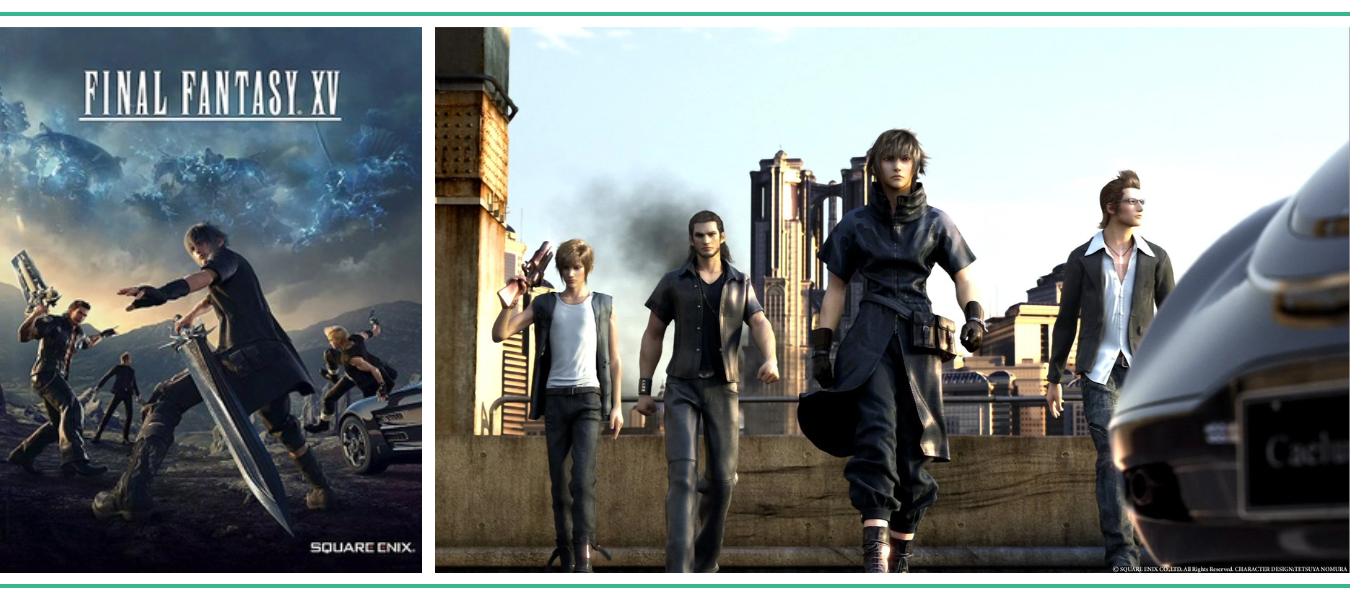
11. Final Fantasy XV
You thought I was done? Strap in. This story’s just getting started.
When Final Fantasy XIII was announced at E3, it was announced not by itself, but alongside two other games—all part of a compilation series known as Fabula Nova Crystallis. To this day, I have no clue why Square Enix felt it a good idea to announce three next-gen games at once when it was still promoting a mainline title on the PlayStation 2… but I digress.
Anyway, XIII was only part of a larger saga. The games wouldn’t be connected but would share indirect themes—namely the importance of crystals and powerful gods like Etro and Pulse. It all ended up being gibberish, for the most part, but at the time, the idea of an expanded Final Fantasy universe was too tantalizing to ignore.
One of the two accompanying games was Final Fantasy Agito XIII—a game intended for mobile phones that was eventually rebranded as Final Fantasy Type-0 and released for the PlayStation Portable. (Another game, Final Fantasy Agito, was eventually announced and released for mobile phones. You can’t make this shit up.)
The final of the three games? Final Fantasy Versus XIII.
Directed by Kingdom Hearts creator Tetsuya Nomura, Versus XIII promised action-RPG gameplay in the vein of Sora’s adventures, meshed with a dark aesthetic and captivating tale of two feuding houses, a la Romeo & Juliet. It was a mesmerizing pitch, elevated by strong visuals, striking character art, and a haunting main theme composed by the legendary Yoko Shimomura.
Then came development hell. Years went by, with nary a word on Versus XIII’s progress. Final Fantasy XIII came and went. Agito XIII saw its aforementioned rebrand. Final Fantasy XIV—fourteen!—was announced and launched, only for Versus XIII to receive the occasional new trailer or magazine update. Hope wavered for fans worldwide, and certainly for me.
So, by the time Sony gave its E3 2012 press conference, Final Fantasy Versus XIII was just about the last thing on my mind. I was convinced it was dead and gone. And, in a sense, I was correct.
In a four-minute span, Square Enix pulled off the craziest twist in the series’ history. A gripping trailer re-introduced characters I’d followed for nearly seven years. Pulse-pounding action teased the latest innovations to the game’s combat. Melodrama abounded. Then, just when viewers thought the dust had settled, one final dialogue exchange for the ages:
“The legend meets its match.”
“But… The world is ever changing… For the fifteenth coming.”
Versus XIII was dead. In its place was Final Fantasy XV.
To this day, I have never been more hyped for a game than I was for Final Fantasy XV. Sadly, the final product never lived up to its potential—but that didn’t stop me from platinuming the game and whining about it the entire time.
– Written by David Silbert
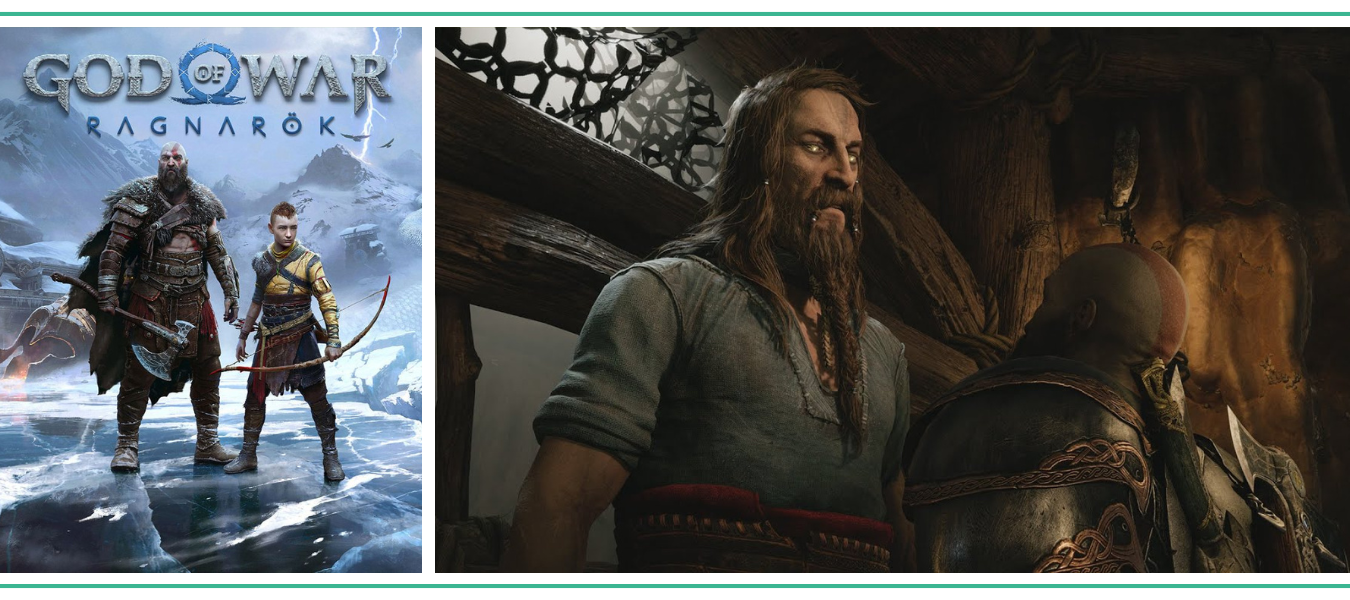
12. God of War Ragnarök
My first introduction to the original God of War was an in-depth Game Informer review with screenshots of Perseus getting the living daylights beaten out of him. At the time, I was still too young to appreciate the magnanimity of what this series would become, and the violence shocked me. Yet, in subsequent years, I followed each release with rising anticipation.
The “secret” ending of God of War (2018) is the first introduction anyone saw to what would become God of War Ragnarök. The teasing of Thor with Mjolnir set the scene for what could only be anticipated as one of the greatest clashes in the series’ mythos. Three years later, we were gifted with the 2021 PlayStation Showcase trailer and provided a peek at who and what would define this sequel.
We saw the enraged Freya, a hooded Thor, new enemies, old friends, the brutality of new combat, and the reveal of Tyr. However, the closing is what cements this trailer as arguably one of the best. We meet a new character whose first dialogue is the cryptic, “You’ll get your answers soon enough. Well, some of them.” Then, nothing for a a year until a 2022 trailer which gave us Odin and alluded to the conflicts that would plague Atreus and Kratos in their new adventure.
Ultimately, I found the game to be nothing but spectacular. Ragnarök acknowledges six games worth of lore and 20 years of development, then synthesizes it into the gameplay we know today. It was a game that was so well received by the world (and sold 11 million units in three months) that it received free DLC to celebrate the milestone.
While there were plenty of questions at the end of such an epic game, many of them can be answered. For as long as I live, the phenomenon of God of War may never leave me as I hum the theme and stretch out my hand for an ax that may one day return to it.
– Written by Vaughn Hunt

13. The Elder Scrolls V: Skyrim
My interest in fantasy peaked in the early 2010s. Back then, Lord of the Rings was still fresh in my mind, and I was desperate for anything that could recapture my imagination for the world of Middle Earth. Unfortunately, the Eragon movie missed the mark (admittedly, the video game adaptation was surprisingly good! But that’s a story for another day). Despite my love for the genre, it seemed the genre didn’t love me back.
That changed when Skyrim was announced at E3.
From the ominous beats of the Elder Scrolls theme, to the first shout of FUS-ROH-DAH! (in synch with the music, at that), to an epic montage of the land of Skyrim, few things have turned my hype meter from zero to 100 so quickly. Skyrim immediately became a must-play for me, and the tease of what was at the time an unparalleled open world to explore had me salivating over the closest thing I could get to a Middle Earth experience. I couldn’t wait to play it on release day.
…Or so I thought. My mother (who has often been a video game savior for me) had a very strict rule: no M-rated games until you’re 17. No ifs, ands, or buts about it.
Skyrim launched two months before I turned 17. As much as I begged and pleaded, telling her it’s “really just like Lord of the Rings,” she wouldn’t budge. Rules were rules. I would sneak in some gameplay at David’s house in the meantime, which only hyped me up more. That’s right: I was hyping myself up for a game that was already released.
Finally, the day I turned 17, I went to Gamestop and purchased Skyrim myself. My long wait was finally over! I booted it up and dove in, dedicated to becoming a mage (woefully unaware that I would eventually fall into the only build that matters: stealth archer), and my journey was off. It was everything I hoped it would be: The world was immersive, the music was epic, and within minutes of exploring I got knocked hundreds of feet into the air by a giant. Perfection.
My hype was validated. This was the game I’d been waiting for.
Naturally, my mom watched me play for a few minutes, said “Oh, this is just like Lord of the Rings,” and walked away. I nearly sent my controller through the TV. Still, it was worth the wait!
– Written by Mark Bowers
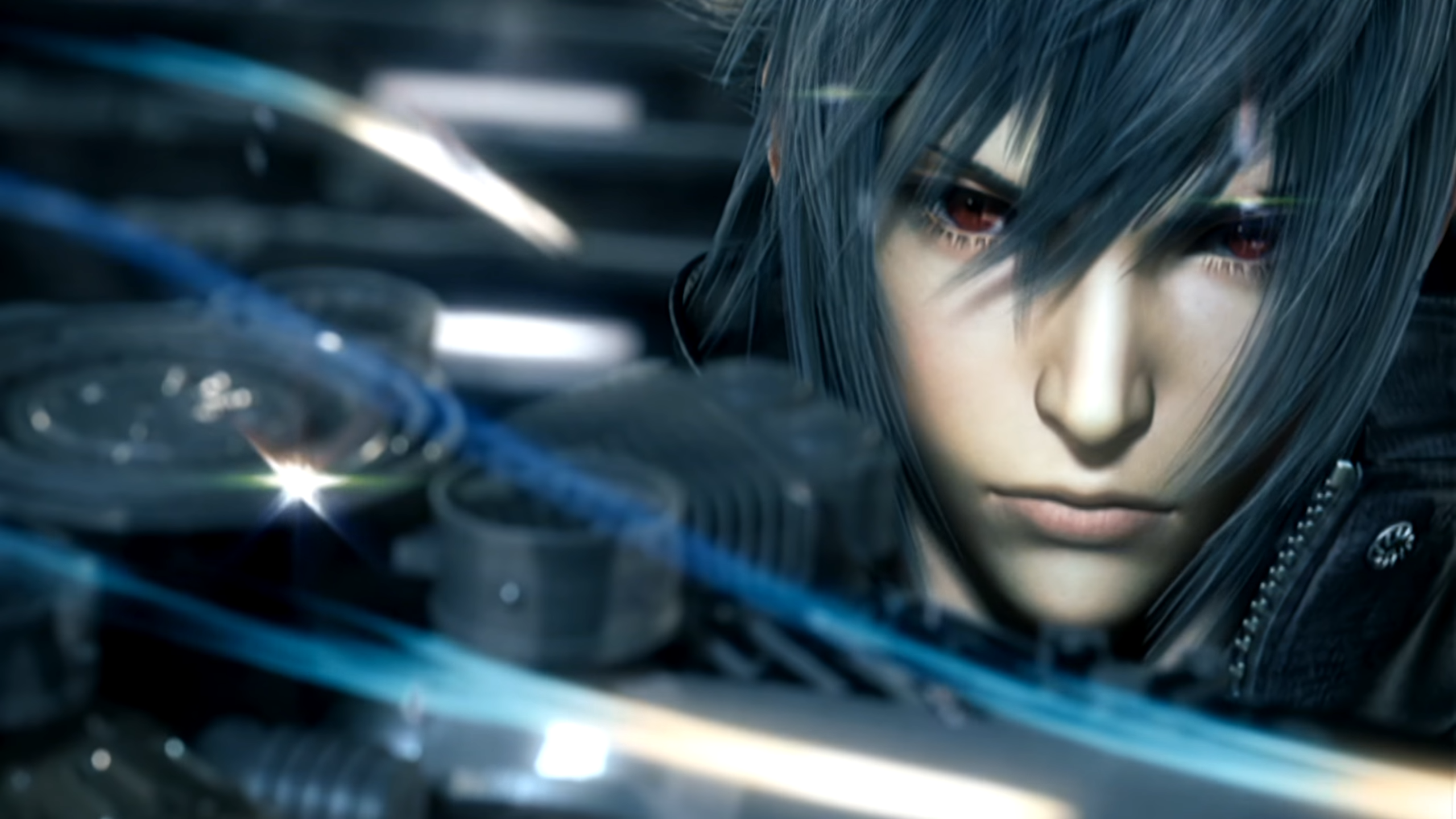
What Are Your Most Hyped Video Games Ever?
Let us know in the comments!


